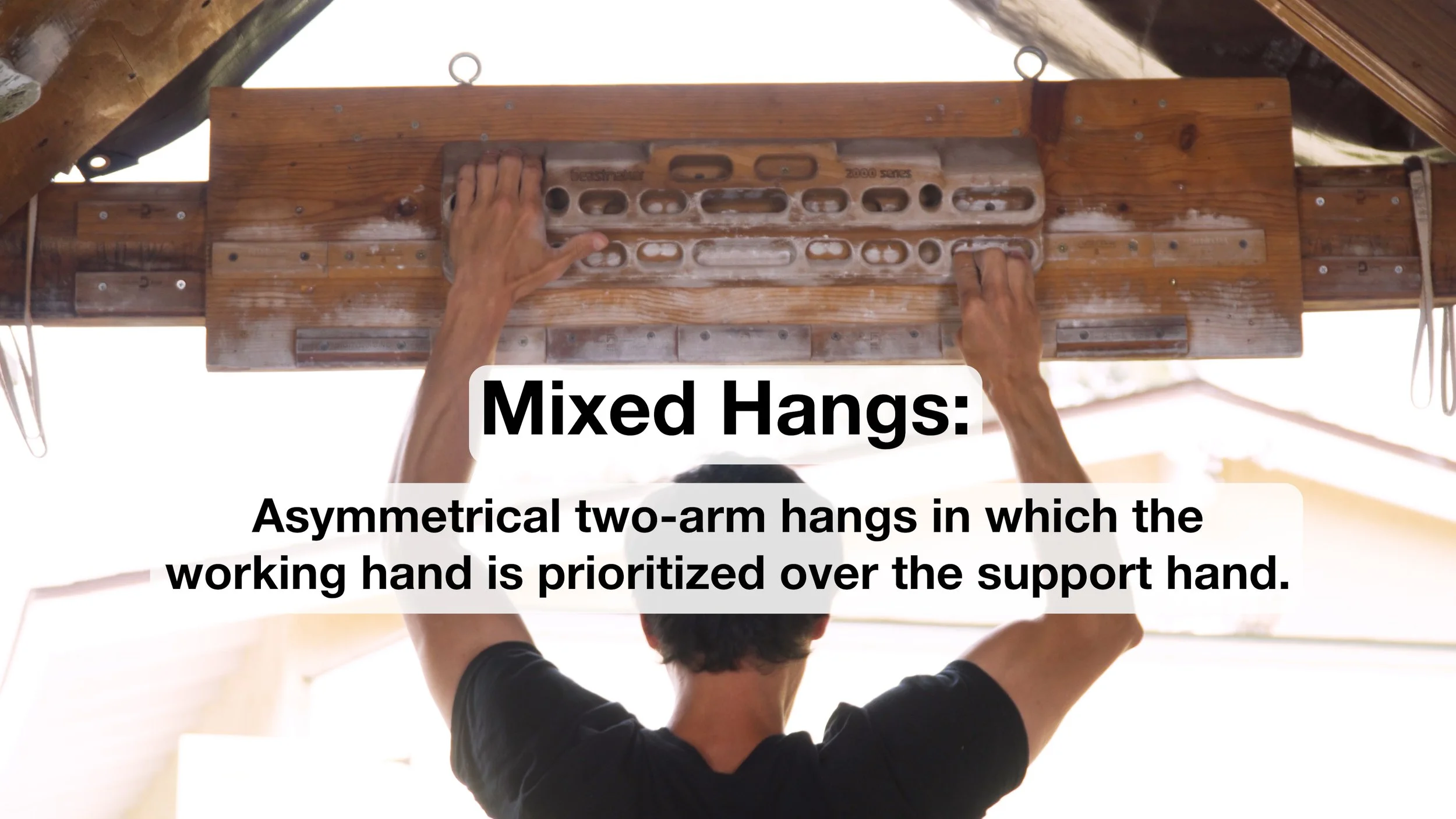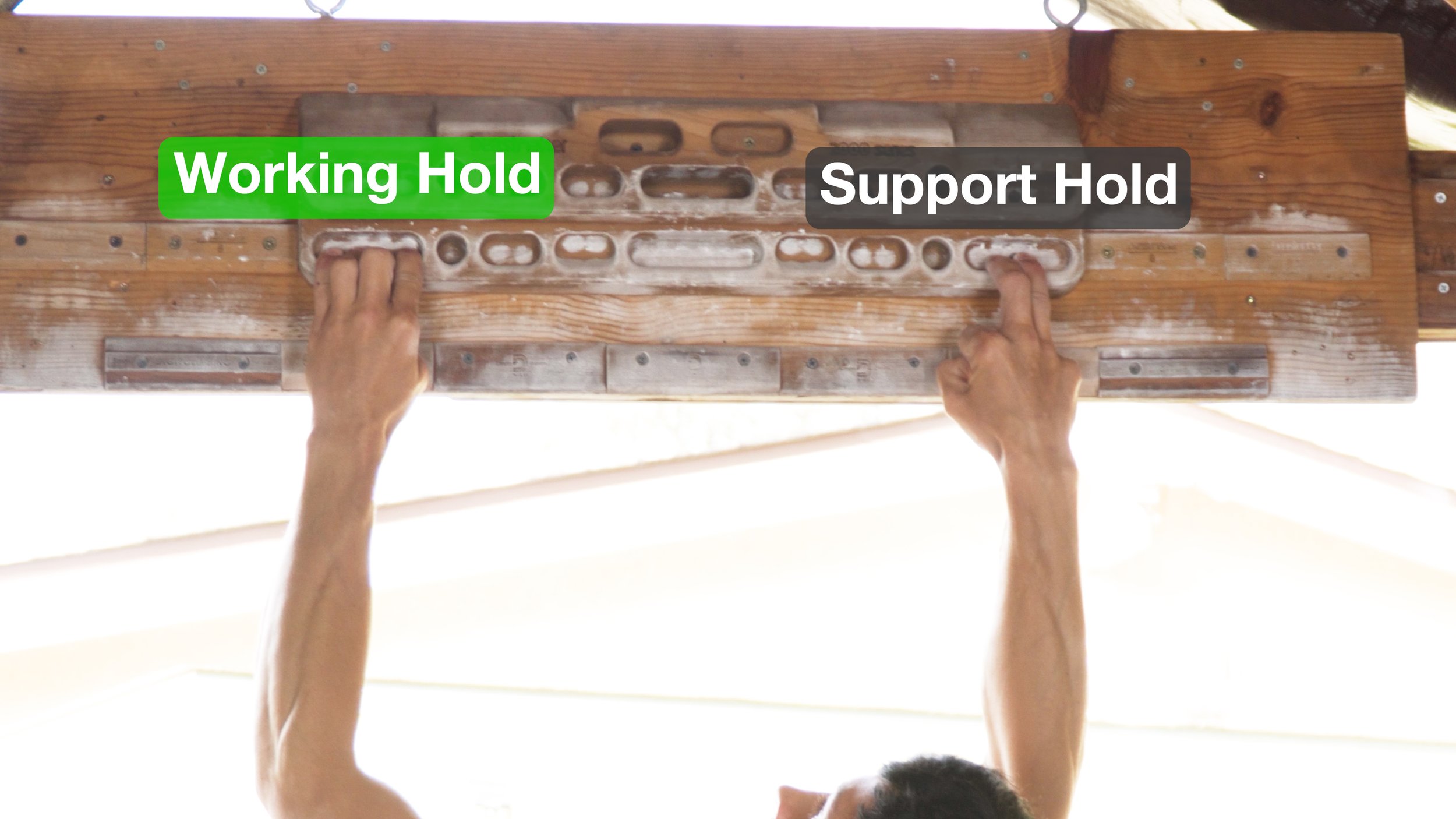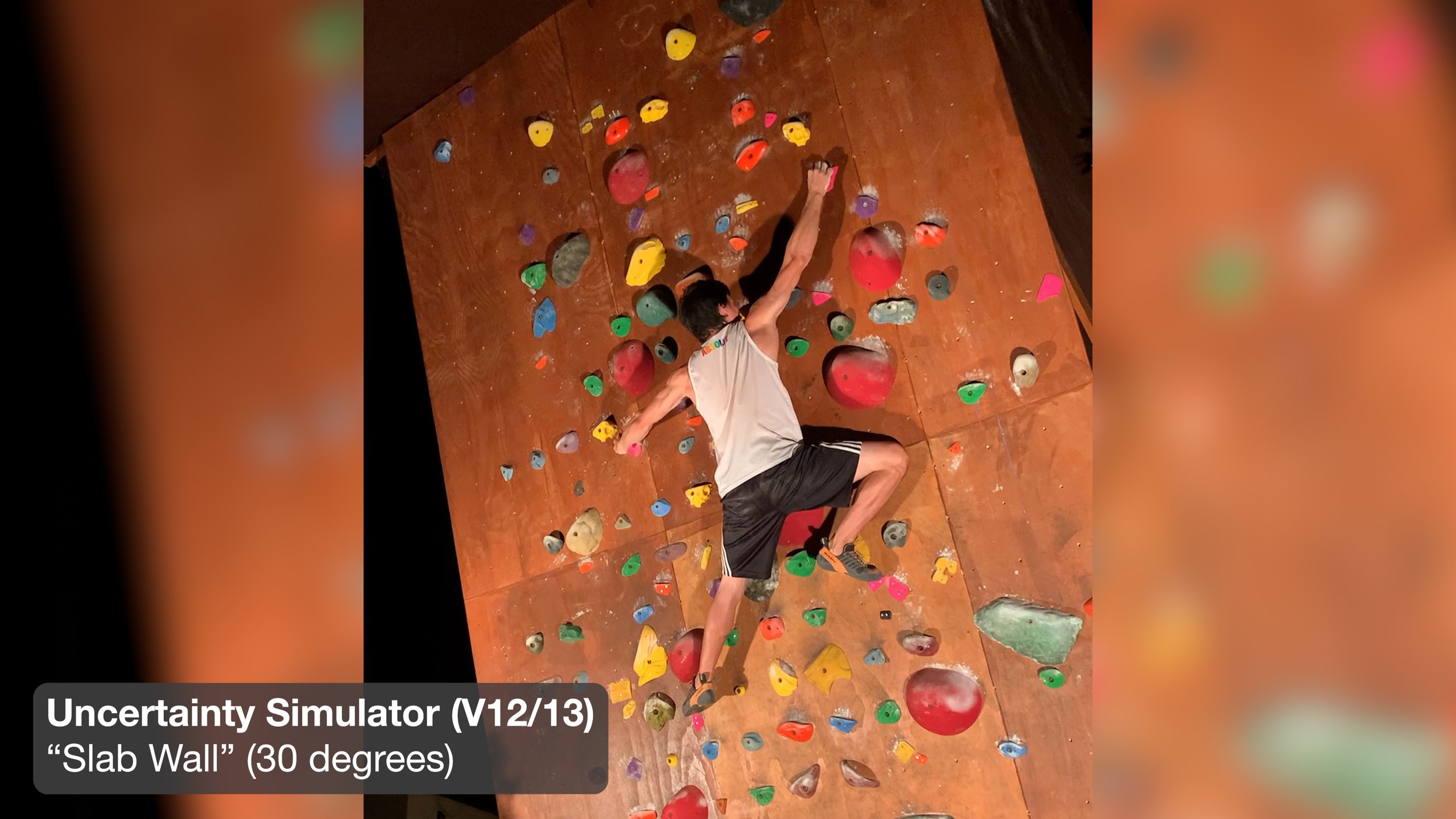Build World Class Finger Strength with No Equipment [Mixed Hangs Guide 2023]
Hooper’s Beta Ep. 132
Introduction
For climbers seeking to strengthen their hands, there is a wide array of training methods available. However, many climbers often face challenges of limited time or lack of enthusiasm for training. In such cases, fingerboards emerge as a highly accessible and widely used tool for grip training. Remarkably, fingerboarding can develop incredibly strong fingers without the need for weights or additional equipment. This makes it an appealing option for climbers of all levels who desire to improve their hand strength efficiently and effectively.
Why Mixed Hangs vs Symmetrical Hangs
When it comes to grip training on a fingerboard, opting for mixed hangs over symmetrical hangs offers several advantages.
One notable benefit is the ability to consistently increase the load without the need for extra equipment like weights or pulleys. In contrast, symmetrical hangs quickly necessitate the addition of weight to maintain the desired level of difficulty.
Mixed hangs are suitable for climbers of all skill levels and offer unique advantages.
For newer climbers, mixed hangs closely mimic the experience of climbing, where holds are rarely matched, requiring weight distribution, control, and coordination. Additionally, mixed hangs provide a pathway for gradually transitioning to one-arm hangs.
For more advanced climbers, mixed hangs allow for specific preparation of additional grip types, such as pockets or half and full crimp holds, with minimal time and fatigue expenditure. Another advantage is the exposure to at least two grips simultaneously, promoting overall grip versatility. Moreover, larger, more skin-friendly holds can be utilized during mixed hangs, and the aggressiveness of the edges can be controlled more effectively compared to minimum edge hangs.
Despite the numerous benefits of mixed hangs, this training method is often overlooked or rarely discussed. In light of this, we will guide you on how to incorporate this highly beneficial approach into your fingerboard training routine.
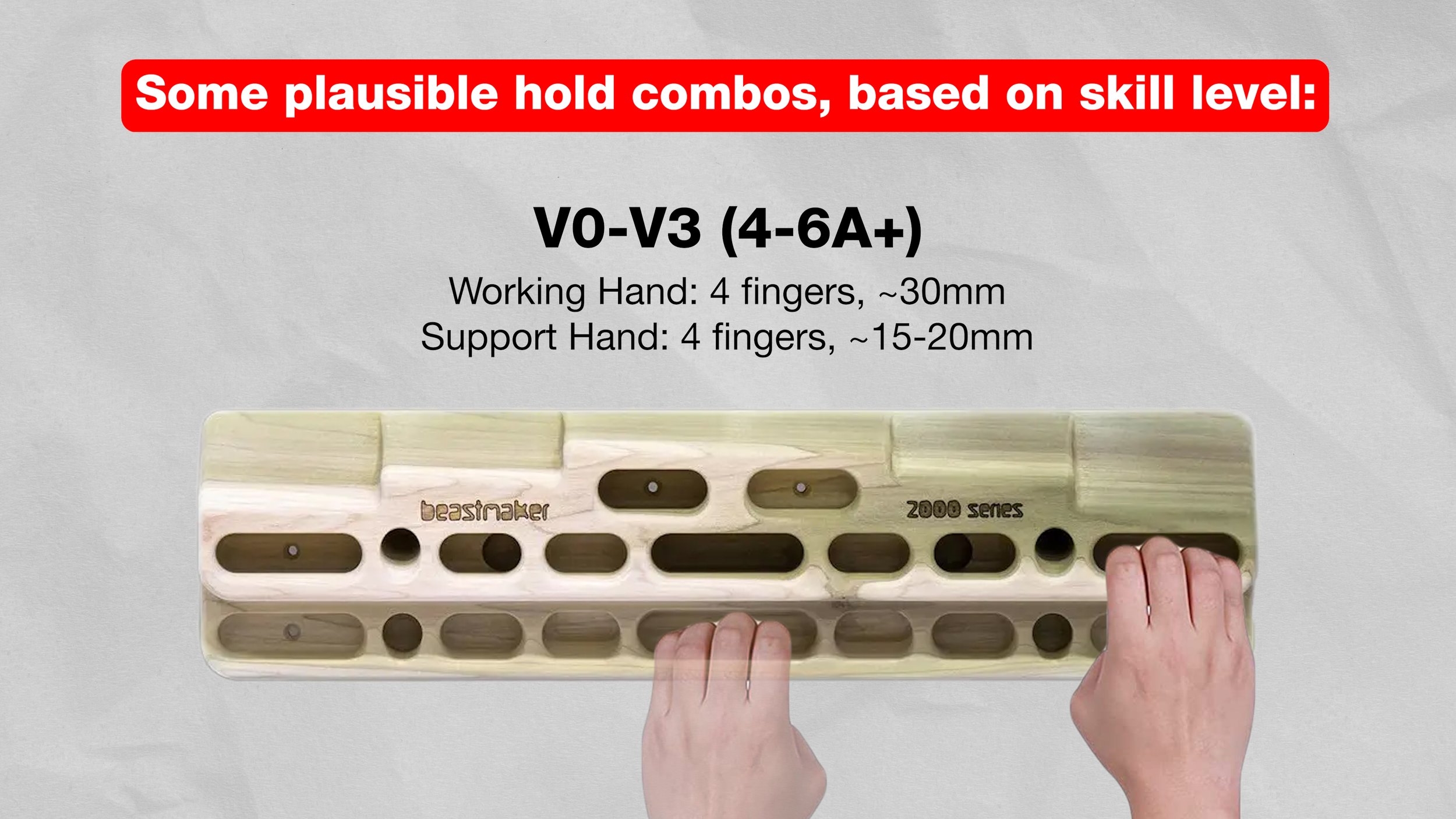
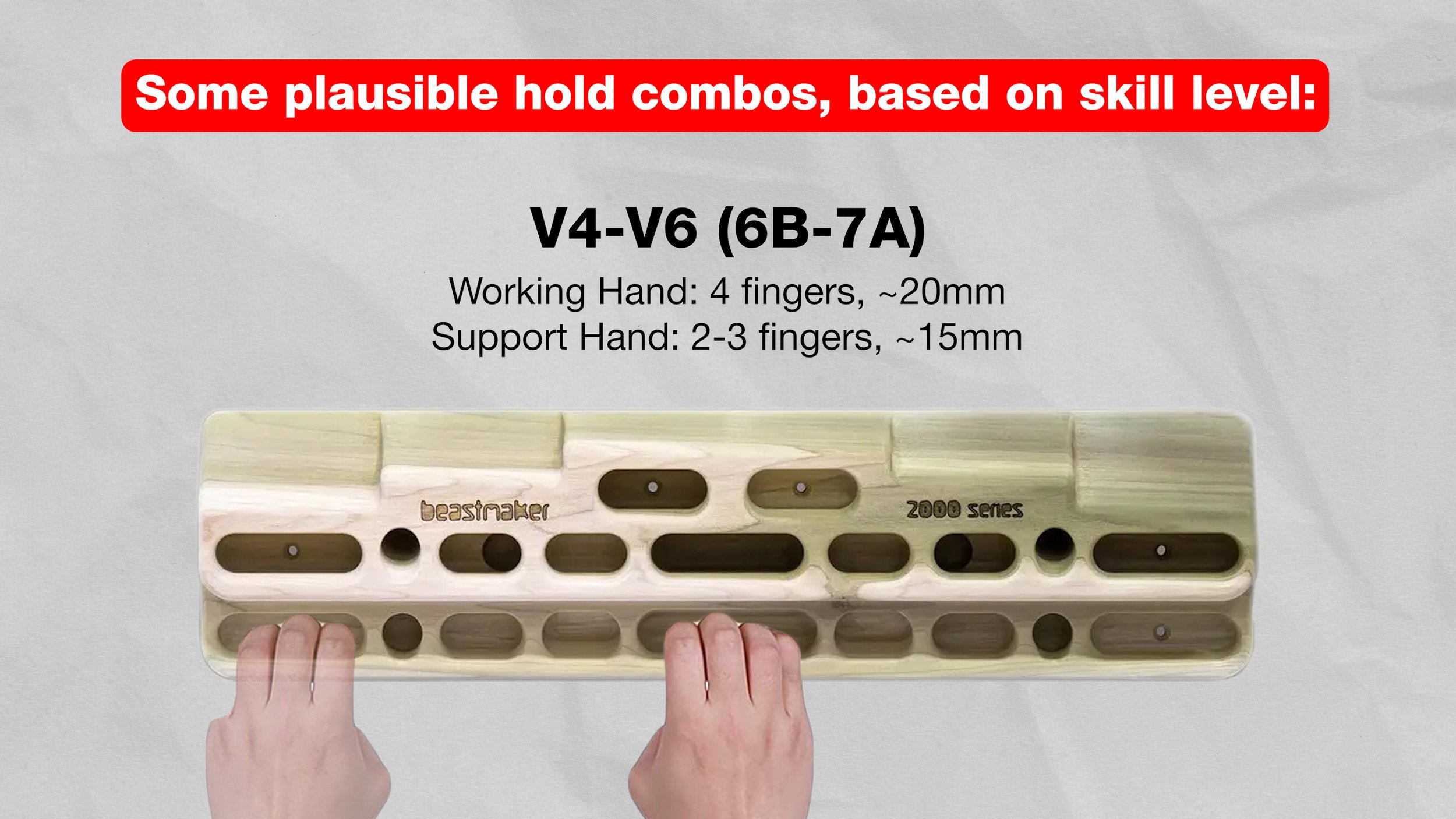
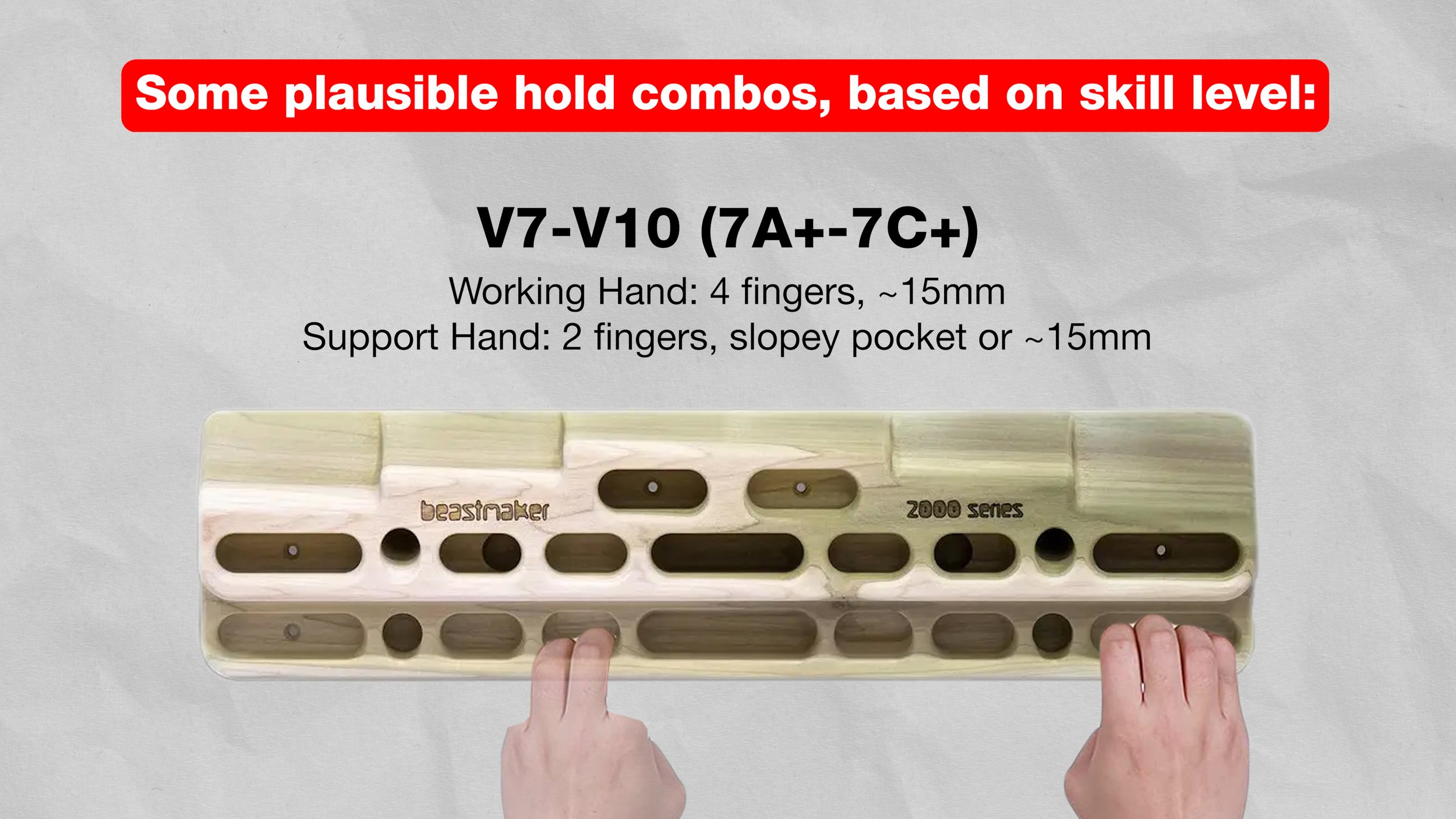
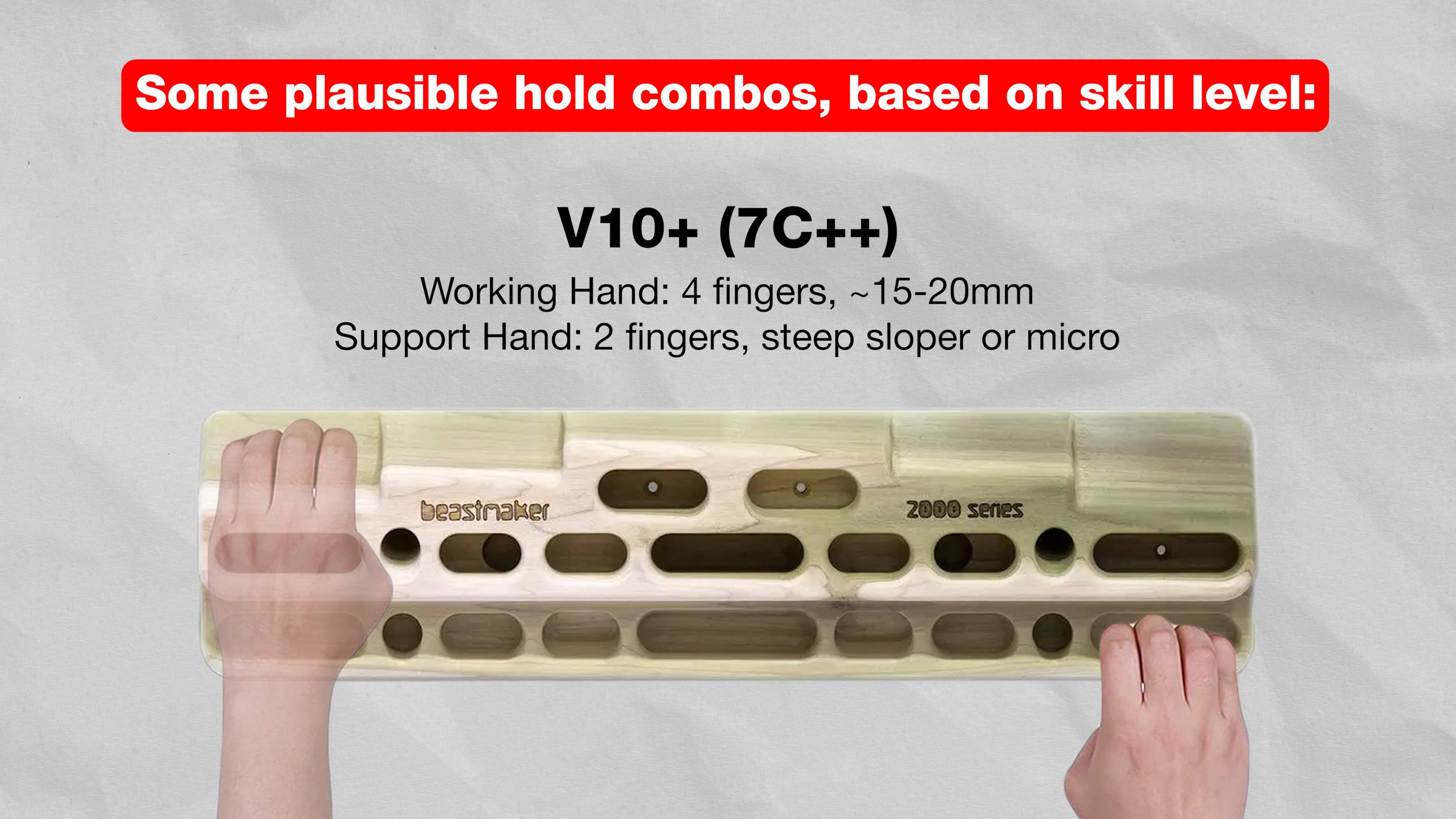
Initial testing: play around and find failure.
During the initial testing phase of fingerboarding, it is recommended to explore and push your limits. Instead of fixating on specific details, focus on giving your best effort in this new and challenging situation, as progress will be made regardless. Dedicate a couple of sessions to this process, which will help you develop a confident understanding of your abilities and provide practice with various grip combinations. Once you have experimented sufficiently, select the combination that you prefer or find most comfortable, and proceed from there. While having additional features like micro edges on your fingerboard can be advantageous, it is entirely possible to achieve good results with a typical board. In many cases, utilizing the middle two edges as an assist grip tends to work well for fingerboarding exercises. Remember to maintain a balance between challenging yourself and finding a grip combination that allows you to perform effectively and comfortably.
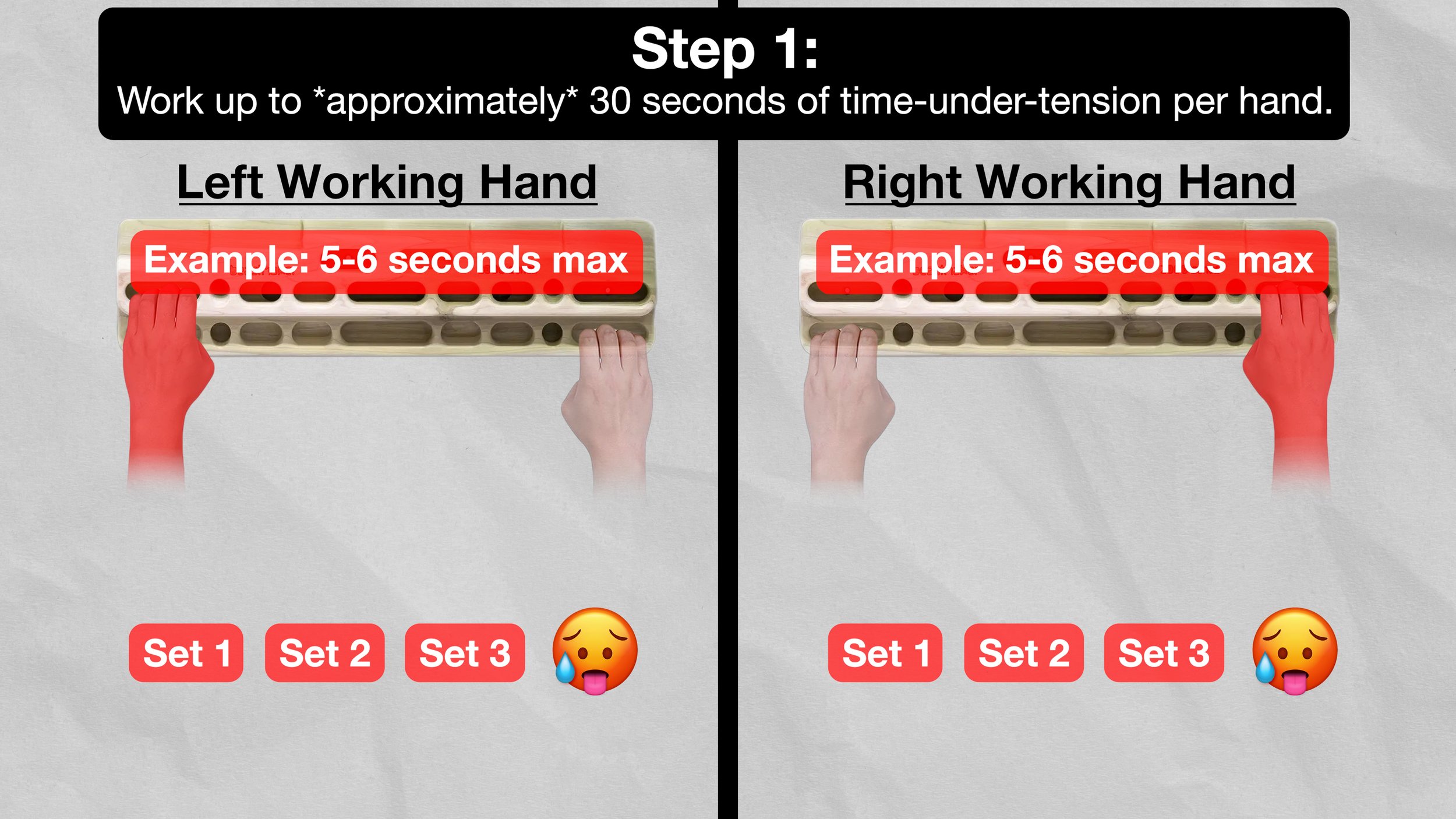
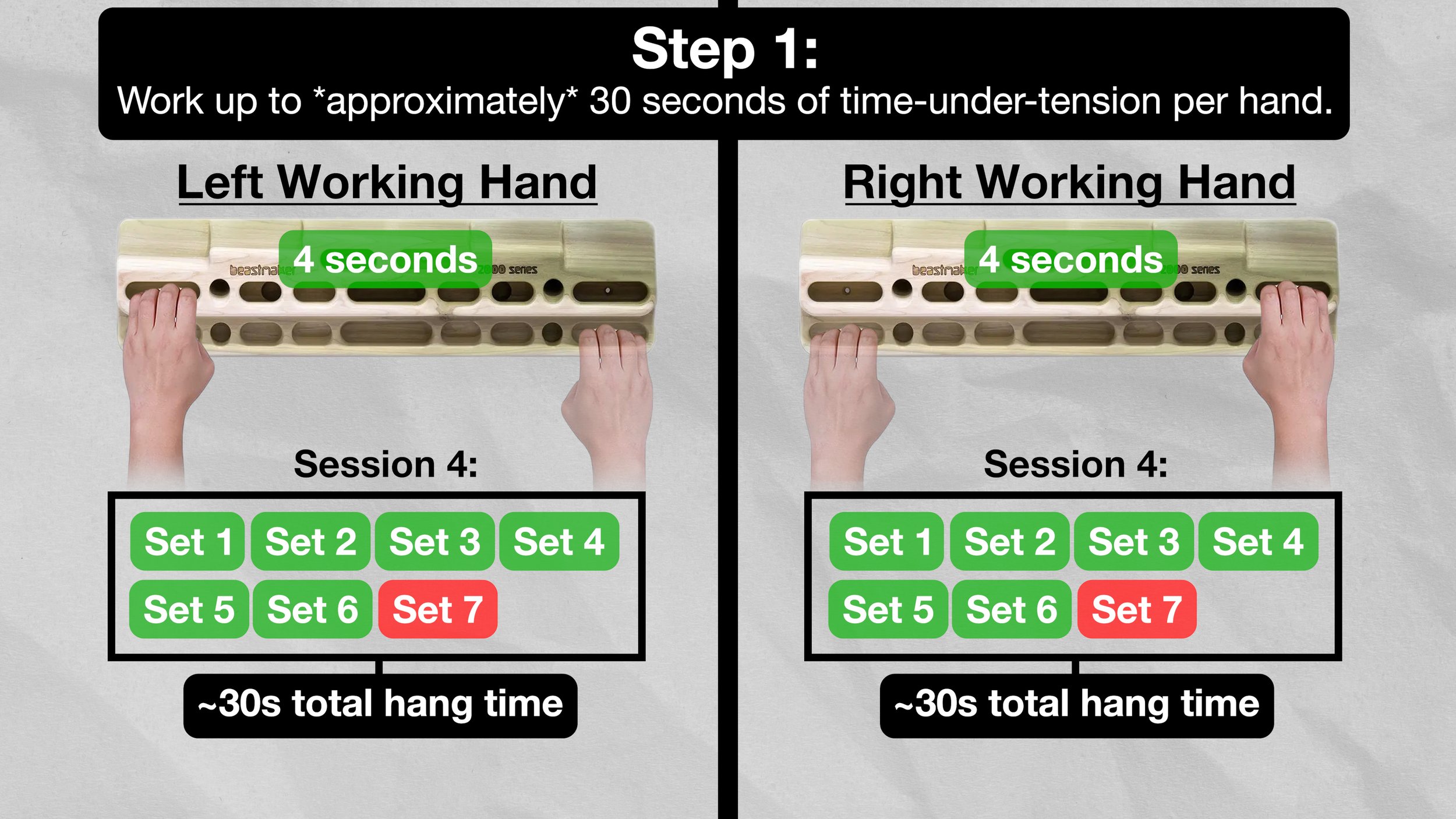
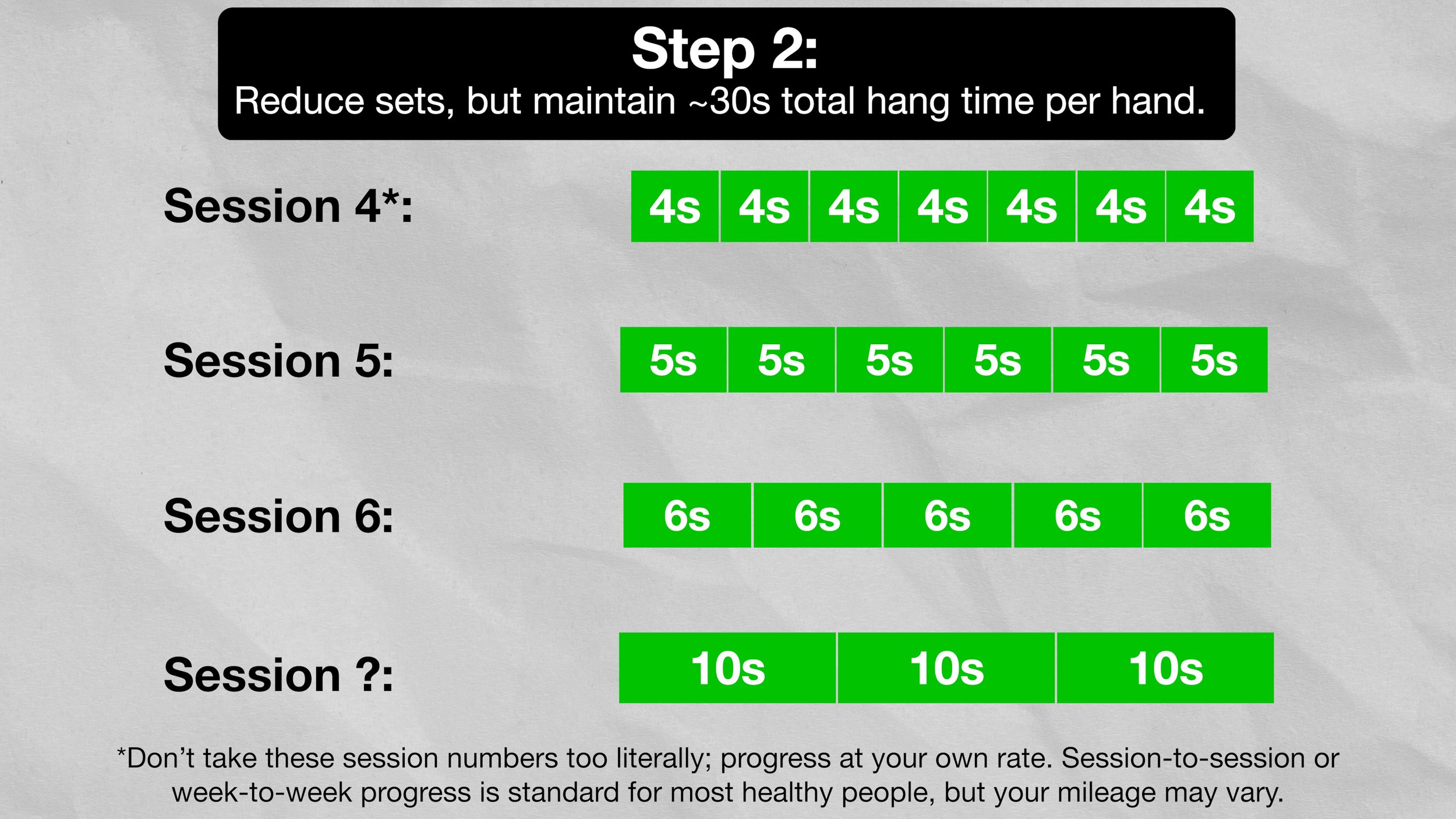
Pro Tips
When it comes to fingerboarding, it is advisable to keep things simple and focus on 1-2 grips at a time. Especially if you are training before a climbing session, it's important to avoid excessively tiring yourself out. However, it is crucial to exert effort and push yourself to make progress. The key is to perform challenging repetitions without reaching failure. Once you acclimate to the training, you should be able to complete something like 3 sets of 3 repetitions at your 5-rep maximum (or 5-6 reps at your 8-rep maximum) without feeling completely drained afterward. When you effectively manage the intensity of your fingerboarding workout, you should feel adequately warmed up without feeling excessively fatigued. Occasionally, you may slightly exceed the optimal intensity, but that is acceptable. However, it is important to avoid feeling completely wrecked, as excessive fatigue can negatively impact your climbing performance. Striking the right balance between challenging yourself and maintaining energy for climbing is key.
I don’t recommend monos unless you are fairly experienced and know what you’re getting into. Injury risk to benefit doesn’t seem favorab
FAQ:
What if I have weights? Can I add weight to mixed hangs?
Of course! It’s awesome to not *have* to add weight, but adding incremental load is often a very useful way to increase intensity. Another benefit of mixed hangs, is that you will not need to add as much weight as you would with symmetrical hangs (I wouldn’t typically advise choosing edges for mixed hangs, such that you’re able to one arm the working hand without assistance).
Are mixed hangs better than traditional symmetrical max hangs?
For the most part I would say that they’re neither better or worse, though there will be times where one approach will suit your needs better than the other. I would typically lean towards the method that best replicates the grip that you want to prioritize improving, while still allowing a degree of skin comfort and ergonomics (not tweaky).
How long should I rest between sets?
1-5 minutes. Less will disperse fatigue less completely, and produce a degree of strength endurance, at the cost of sustained maximal effort over the course of the routine (set to set). For most people, 2-3 minutes is a happy compromise of recovery and time efficiency.
Should I do mixed hangs before or after climbing?
Definitely before. There are very few circumstances where I would recommend grip training after climbing.
What grip type should I use?
Assuming you don’t have reason to train a specific grip, I would go with either open hand / chisel, or half crimp. Whichever feels strongest on your edge of choice.
DISCLAIMER
As always, exercises are to be performed assuming your own risk and should not be done if you feel you are at risk for injury. See a medical professional if you have concerns before starting new exercises.
Written and Presented by Jason Hooper, PT, DPT, OCS, SCS, CAFS
IG: @hoopersbetaofficial
Filming and Editing by Emile Modesitt
www.emilemodesitt.com
IG: @emile166
